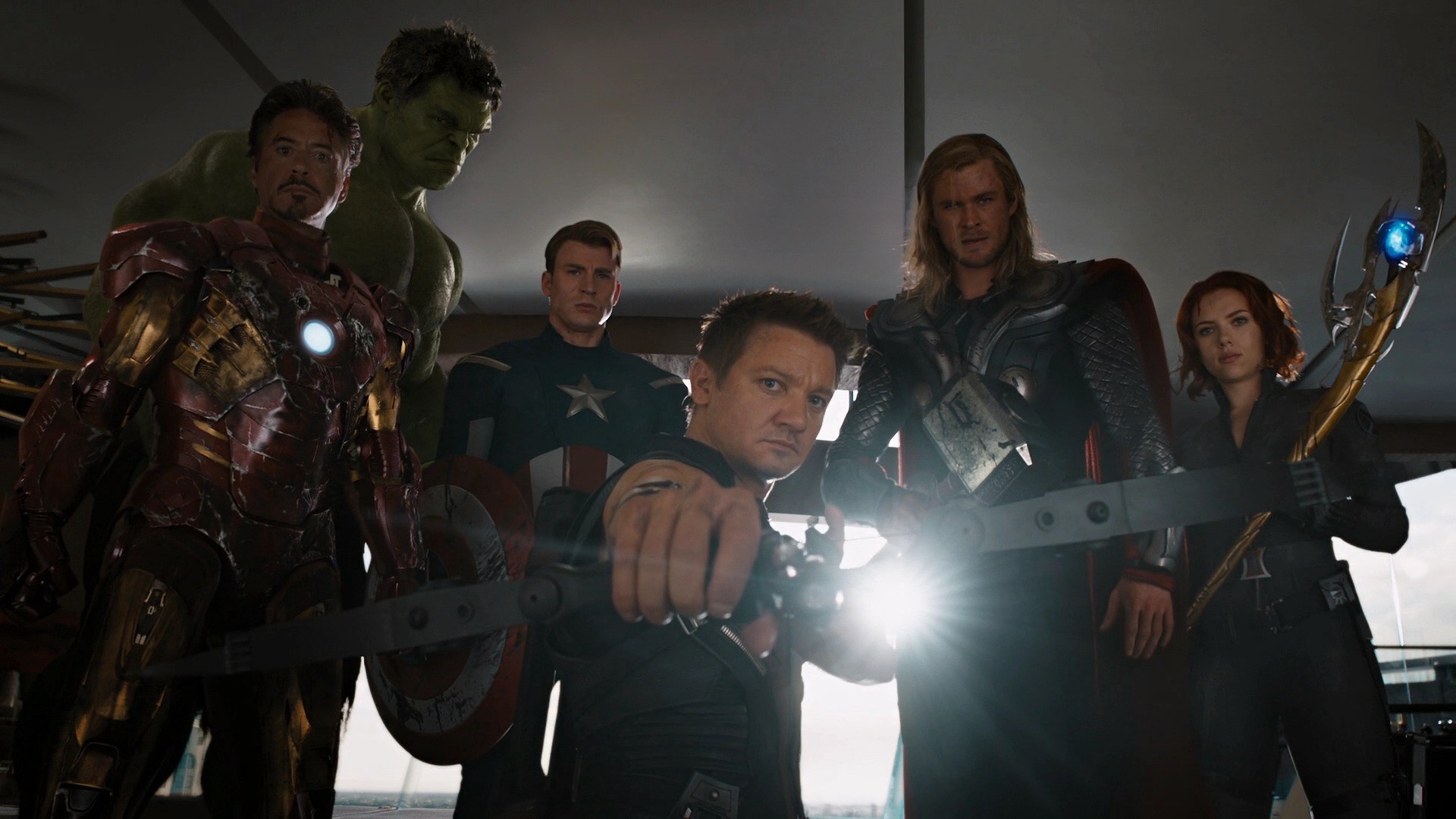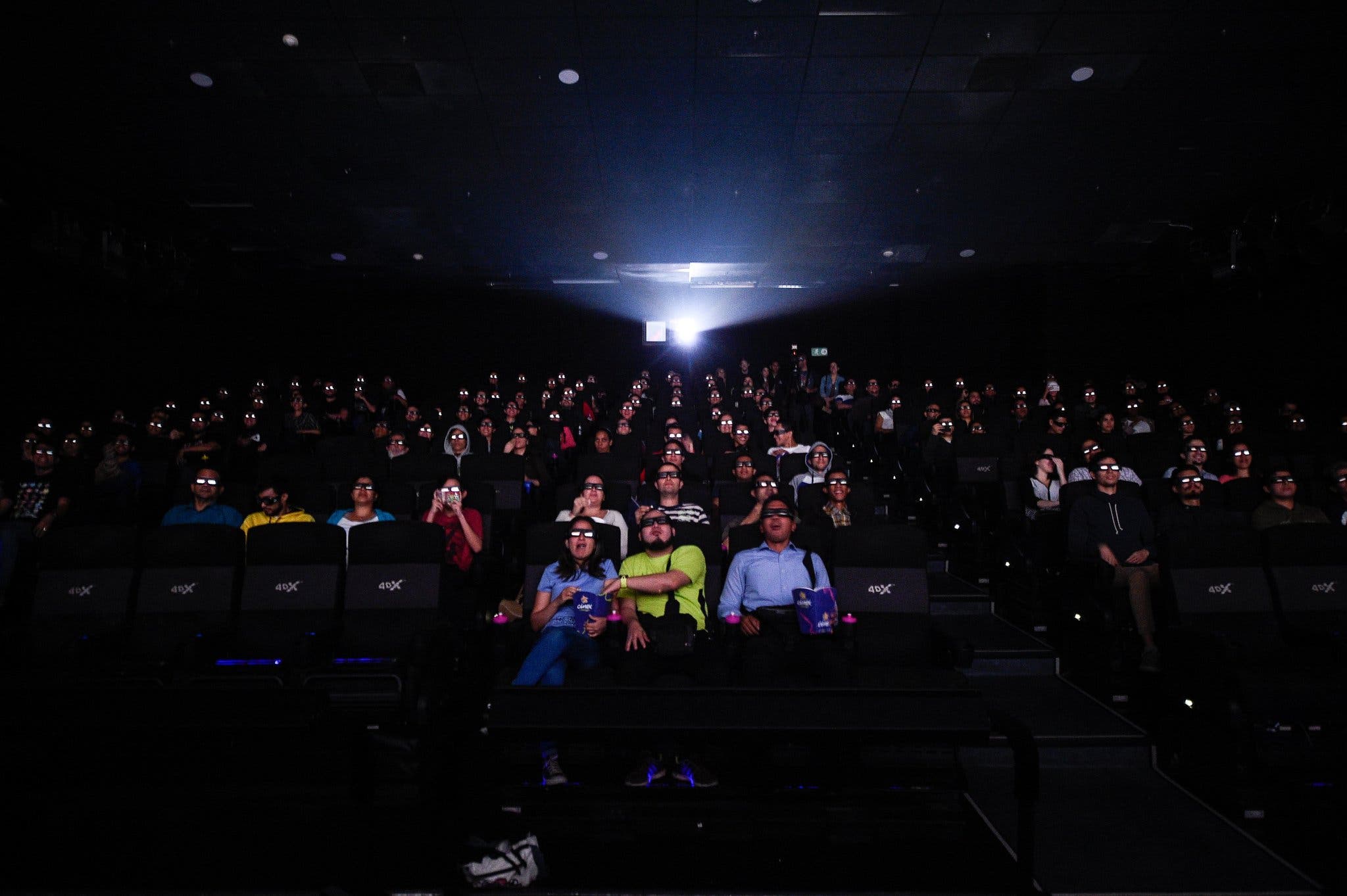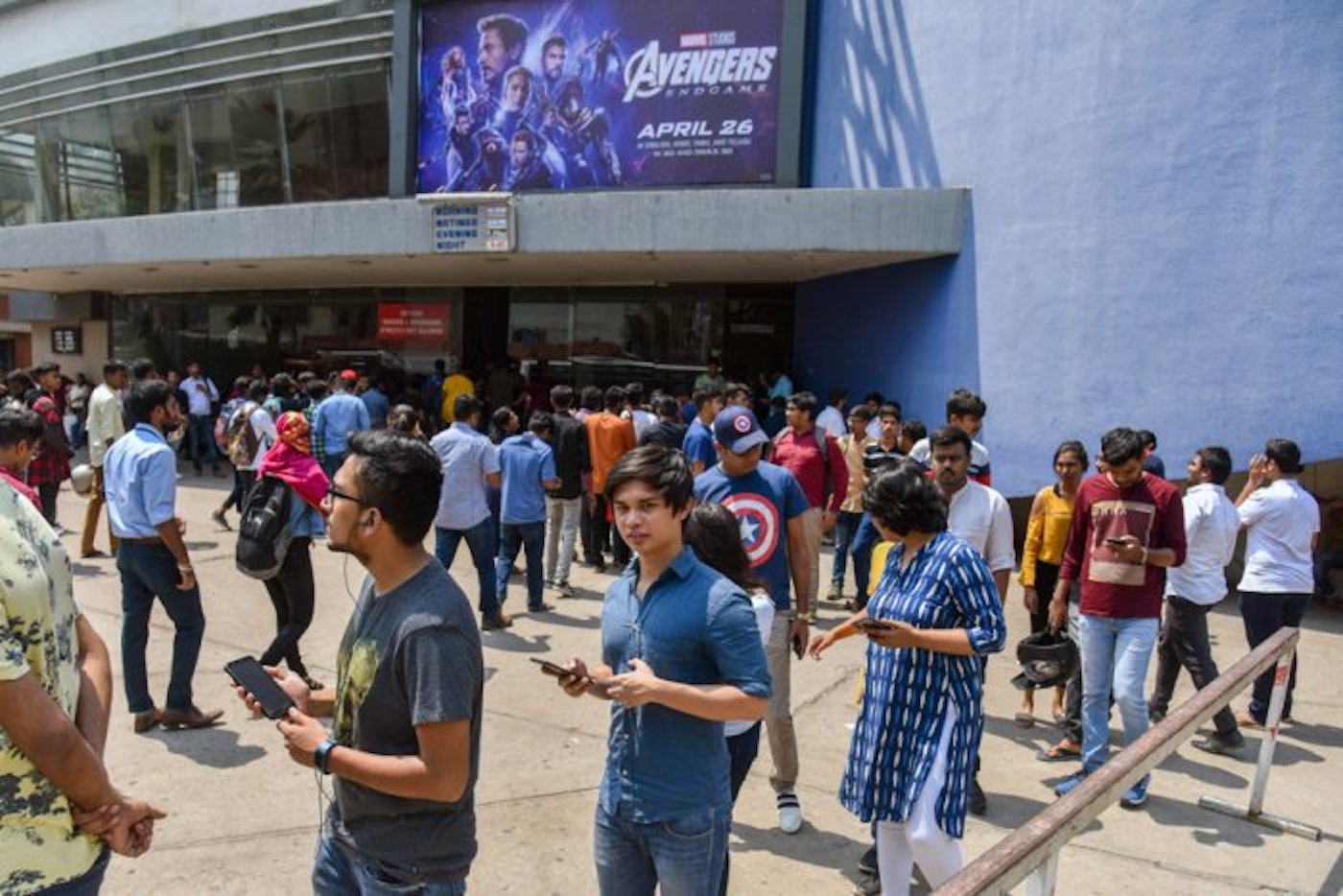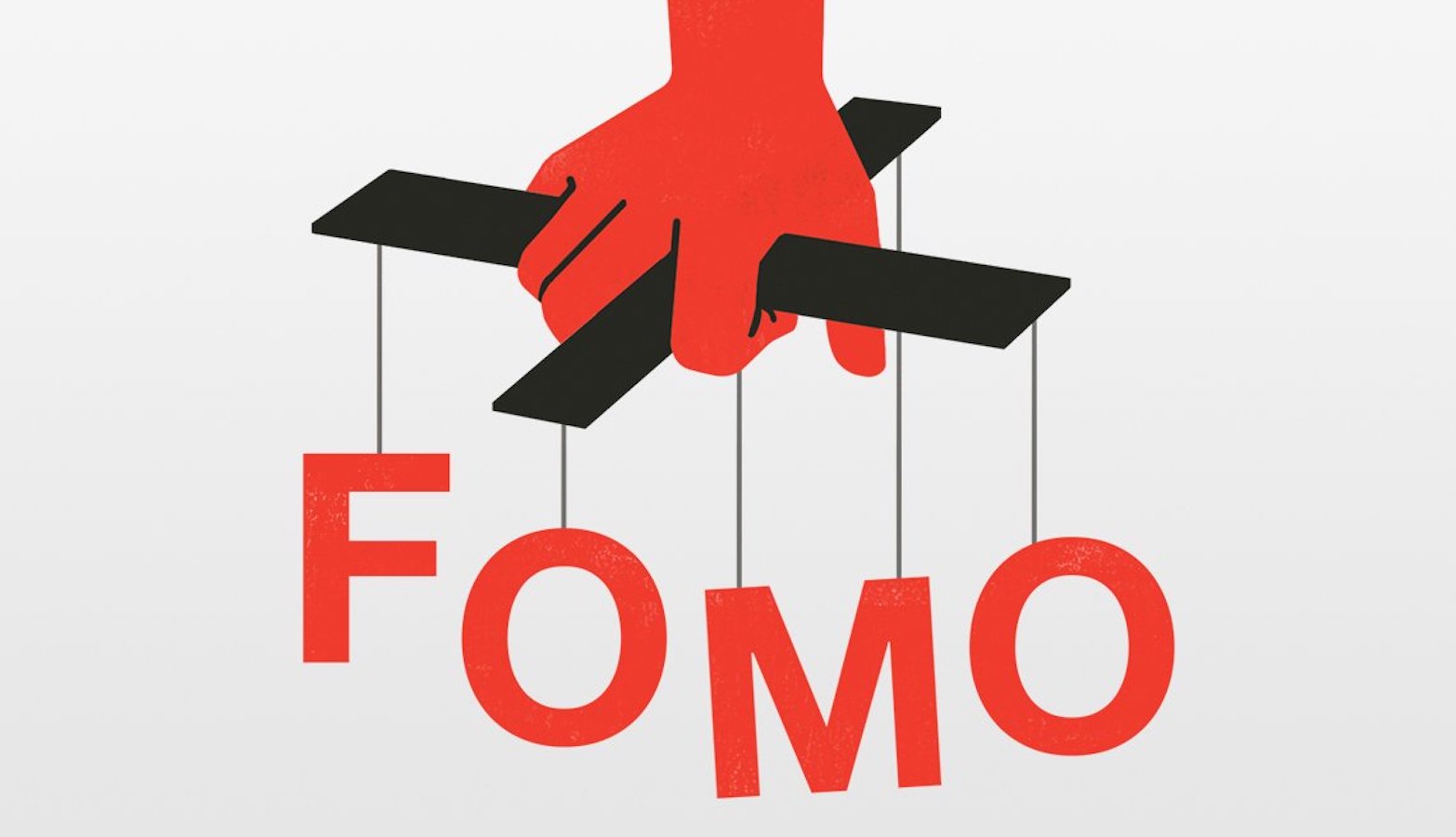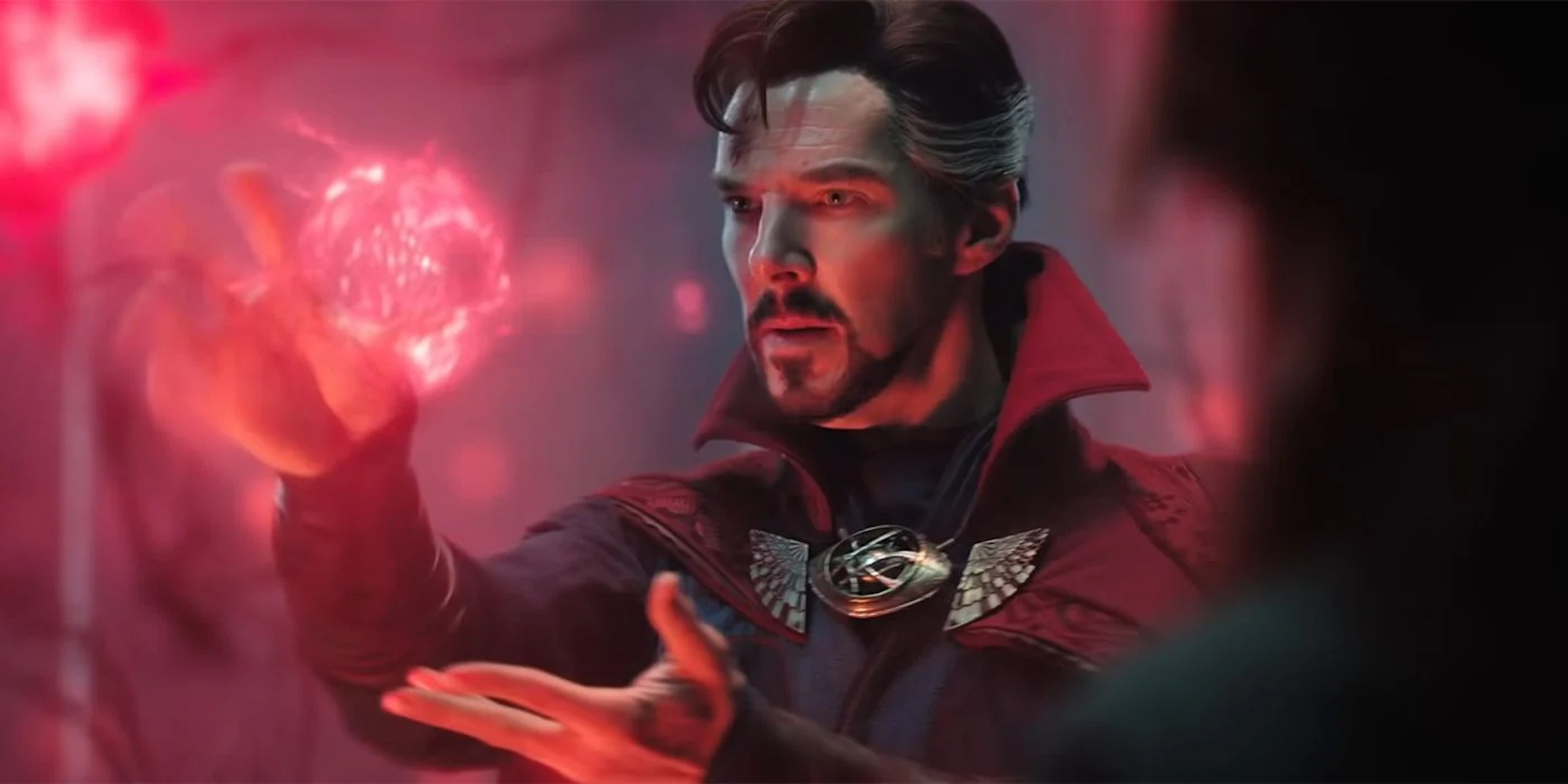Table of Contents Show
As a murmuring hum of excitement fills the air of a packed theater, movie-goers take their seats and relish in the frigid air-conditioning being pumped into the darkened room. Perspiration begins to form on cups of soda. The dampness transferred onto their hands is somewhat annoying, but much more preferable than the total-body dampness brought on by the sweltering summer sun just outside.
As Marvel’s iconic opening sequence begins to play, the people in this room — strangers to one another — are about to experience a cultural event together: the blockbuster of the summer.
Blockbusters + Superhero Movies: ‘Two Peas In A Pod’
Since 2008, Marvel has dominated the “box-office blockbuster” list, slating some of their biggest and most anticipated releases in the summer months (( “Marvel Movies List in Order of Release Date.” comic-cons.xyz. Accessed April 13, 2022. )). Summer action flicks started gaining traction “after Steven Spielberg’s shark attack thriller Jaws released June 20th, 1975 in a bid to intentionally spook beachgoers” (( Waxman, Olivia B. “Why Hit Movies Are Called Blockbusters” TIME. Published February 7, 2020. Accessed April 13, 2022. )). Filmmakers have spent decades chasing the same sunny success, perfecting a formula that will predictably produce the next must-see blockbuster of the summer, every summer.
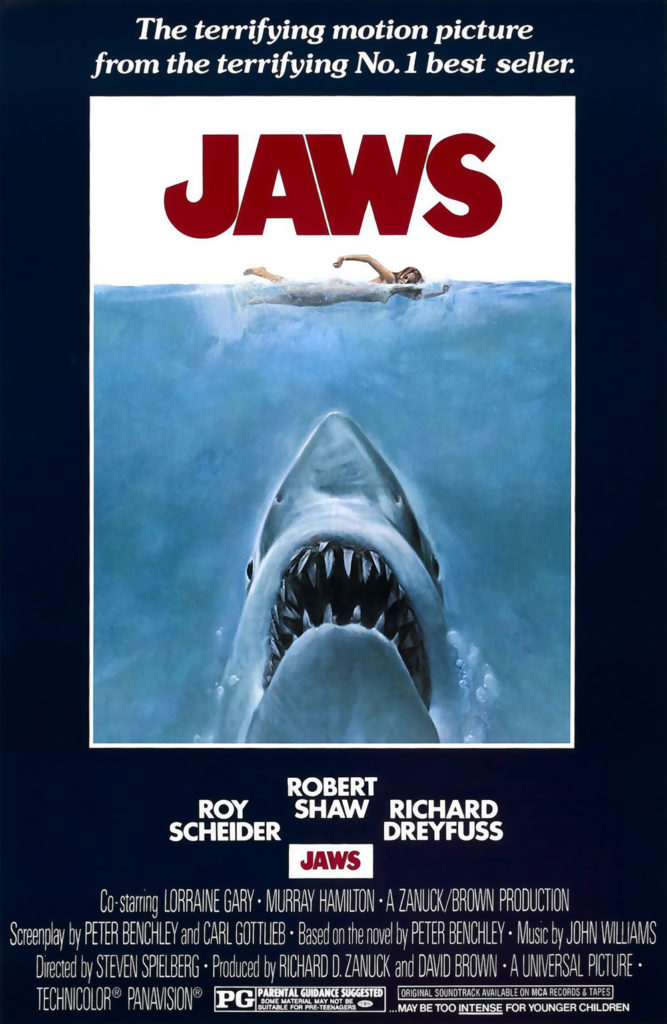
It seems that they’ve found their winning ticket — or should we say, it seems that they’ve found their superpower. The superhero narrative appeals to the masses, especially in America, where the origin stories of so many superheroes are representations of a society’s values. Captain America (nationalism and patriotism), Iron Man (The American Dream), and Captain Marvel (feminism) are examples of characters that are easy to relate to despite their “super” abilities. These movies claim they have a little something for everyone. From action and adventure to romance and comedy, what’s not to love?
The irony of this lies in how elitist the Marvel fandom, specifically, has become in their quest to gatekeep their community. This aspect of exclusivity serves as a toxic reinforcer for people to choose to engage with the Marvel franchise. No one wants to miss out on the movie everyone will be talking about and Tweeting about over the weekend. It is not a stretch to consider the idea that much of Marvel’s success as a franchise may come from society’s fear of missing out rather than any other factor. In a society where profit is king, the franchise knows that the only consumer they need to cater to is one with FOMO.
FOMO Into Profit
FOMO — the fear of missing out — is a common aspect of life in a society connected by 24/7 instant global communication. It is a phenomenon associated strongly with neurodivergence but also experienced by neurotypicals. Researchers define FOMO as having two distinct components where an individual worries that others are having “rewarding experiences” without them, and an individual’s need to stay in connection with their social group (( Elhai, Jon D., Haibo Yang, and Christian Montag. “Fear of missing out (FOMO): overview, theoretical underpinnings, and literature review on relations with severity of negative affectivity and problematic technology use.” SciELO Brazil. Published April 2021. Accessed April 13, 2022. )).
These two components corollate with distinct actions. The first relates to experiencing anxiety, and the second involves attempts to relieve that anxiety. Studies have linked FOMO to anxiety, depression, and OCD. They have also shown narcissism to play a role in the phenomenon, with the “unmet social needs” of vulnerable narcissists bearing a strong similarity to FOMO (Elhai, Yang, and Montag). If an individual chooses not to see “the biggest movie of the summer”, they are potentially risking social isolation from certain aspects of their life. They will be unable to partake in the discourse in-person or online, and will therefore be unable to understand and utilize certain memes or jokes.
Even if this individual wanted to see the movie, they would be unable to truly enjoy the full experience without having first watched the entire backlog of the Marvel franchise which spans hundreds of hours across films and television shows. There is essentially no way for them to partake in this cultural event without investing an absurd amount of time and energy, and should they choose to do so, there isn’t a guarantee that the fandom would be helpful. Going online to find watch guides or ask questions about any one of the many characters and complex plot lines could lead to unsavory interactions from super-fans.
‘One Bad Apple Can Spoil The Bunch:’ The Impossible Task Of Engaging In Fandom
Writing for Medium, Marvel fan Laquesha Bailey recalls joining a fandom group on Facebook with over 150,000 members where they immediately “noticed its members’ constant negativity,” and observed innocent questions being met with “ire and disgust” (( Bailey, Laquesha. “Why Your Favorite Fandom is So Gotdam Toxic.” Medium. Published June 22, 2021. Accessed April 13, 2022. )). One example they cite involves a member asking a question about Marvel’s TV series, Loki (2021-).
“He questioned the use of Pompeii as an example of an apocalypse, given that there were survivors. Almost immediately, a commenter launched into an angry tirade. ’90% of the population died, that’s not apocalyptic enough for you, genus?’”
Bailey goes on to point out that not only did they find the original question interesting and insightful, but also that the hateful response was not even based on facts.
“For one, he was loud and wrong. 90% of those living in Pompeii at the time didn’t die. I looked it up!”
(Bailey)
While there is a huge portion of the Marvel fandom that is welcoming, there is also an air of superiority about those who have certain “qualifications,” like having read the comics or having been a fan since the beginning of the franchise. Participating in discourse — especially online — is daunting; it is almost impossible for a new or casual fan to know if the space they’ve decided to engage in will welcome them. This combination of truths — that superhero movies are an intrinsic part of culture and that exclusivity is a large aspect of Marvel’s fan base — leads to a portion of the population experiencing a messy form of FOMO, something that the franchise has not hesitated to capitalize on.
Marvel’s Purposeful And Successful Integration Into A Can’t-Miss Cultural Experience
In March of 2022, the very first Marvel comic book sold for $2.4 million. Originally published in 1939, the 68-page comic would have sold for 10 cents and does not feature any of the superheroes currently portrayed in the Marvel Cinematic Universe films. Alyssa Lukpat, reporting on the sale, clarifies that comics containing “first appearances of superheroes like Batman and Spider-Man are precious,” before explaining that the 1962 comic featuring Spider-Man’s debut sold in 2021 for $3.6 million (( Lukpat, Alyssa. “Rare Copy of First Marvel Comic Sells for $2.4 Million.” The New York Times. Published March 21, 2022. Accessed April 13, 2022. )).
Unlike other collectible and vintage items, these comics aren’t necessarily valuable because of their age. Their value comes from the cultural success of the Marvel franchise. Without getting too lost in debating the ethics of collectors, it is interesting to note that sentimentality — or even interest, for that matter — does not always play a role in the million-dollar sale of a 10-cent comic. Stephen Fishler — chief executive of online comic auction house ComicConnect — explains that old comic books have “skyrocketed in price” and “may become even more valuable as more comics are adapted into movies.” According to Fishler, the previous owner of Marvel Comics No. 1 auctioned it to purchase a home. “That worked out very well,” Fishler commented (Lukpat).
From a purely financial perspective, the Marvel franchise is successful. They have generated over $38 billion (( “List of highest-grossing media franchises.” Wikipedia. Last modified April 13, 2022. Accessed April 13, 2022. )) in box-office ticket sales, merchandise, and in-home entertainment; however, financial success doesn’t always necessarily equal cultural value. Auction prices for certain items can be representative of what we as a culture find significant or valuable at the moment (think: the Beanie Baby craze). The most “valuable” comics seem to be bought up not by fans, but by individuals looking to invest in an item that they know they can resell. This is the ultimate example of Marvel’s success at marketing itself as an integral part of today’s culture.
The Social Science Behind Successful FOMO Marketing
Humans are social creatures. Desiring to partake in cultural experiences is natural, and, as previously mentioned, the fear of missing out on those experiences tends to drive otherwise hesitant or uninterested individuals to participate. Operating under a capitalist society encourages corporations to exploit this phenomenon, driving sales by billing their products as integral to the cultural experience and counting on society’s FOMO to pull in the stragglers. The fear of missing out isn’t necessarily always a literal fear, but the feeling is specifically only associated with negative emotions. Despite this, Marvel has evolved into a franchise that elicits millions of opening-weekend ticket sales from a marketing tactic that seems to be largely propelled by FOMO.
It has become a popular marketing technique employed by many brands. Marketing expert Chris Hodkinson — researcher in Quantitative Social Research at The University of Queensland — found that this method relies on motivation for “potential outcomes such as social approval, shame avoidance, ego-involvement, and self-esteem” (( Hodkinson, C. “‘Fear of Missing Out’ (FOMO) marketing appeals: A conceptual model.” ResearchGate. Published October 2016. Accessed April 13, 2022. )). He argues that “FOMO has been opportunistically adopted within direct ‘call to action’ appeals that are particularly aimed at the youth market.
While calls to action are common in marketing, FOMO appeals are distinctive in that they call on the consumer to directly address their internal hesitancy, or resistance, to assent to an action. This is in contrast with scarcity appeals, which attempt to raise concern in the consumer by creating perceptions of limited supply or limited-time deals. While the two appeals differ markedly in their framing, in that one addresses the individual and the other the product, both types of appeals potentially trigger the FOMO at an individual level” (Hodkinson).
Marvel’s Multiverse As A Metaphor
While it is clear that filmmakers have used the superhero narrative to perfect a formula that predictably produces blockbusters and grosses billions, one has to wonder if there is something special about the genre that makes it susceptible to this type of marketing manipulation. Perhaps it is not about the genre of movie at all. Perhaps, like in one of Marvel’s multiverses, there exist endless alternate universes.
In one universe, people pack the theater for westerns each summer. In another universe, a vintage romance book sells for $3.2 million the month after the franchise it belongs to brings in $2.7 million at the box office with its newest installment. If Thanos snapped his fingers and erased all traces of superheroes from public memory, the film industry would simply find a different genre to franchise and bill as their blockbuster. After all, who wants to miss out on the must-see film of the summer?
